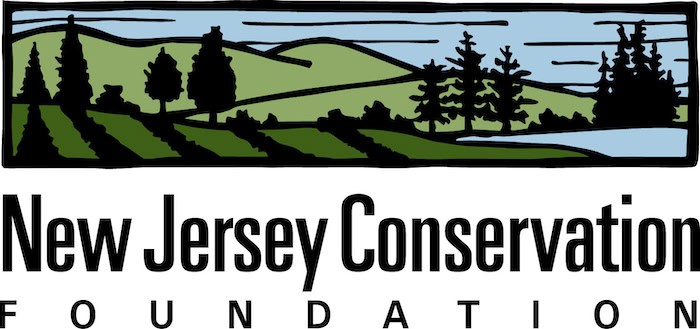By Tom Gilbert
There has been a lot of talk about who voted “red” or “blue” during the Nov. 8 midterm election, but at least one issue on many ballots was nonpartisan “green” – open space preservation.
Across the country, voters of all demographics and political parties overwhelmingly supported ballot questions aimed at creating greener and healthier communities by preserving land.
According to an analysis by the Trust for Public Land (TPL), a national conservation nonprofit organization, voters throughout the United States approved more than $9 billion in new funding for parks, climate resilience and land conservation. It was the largest pool of new state and local conservation funding to get the green light since 2016.
Will Abberger, director of conservation finance at the Trust for Public Land, attributes the strong voter support to deepening concern over climate change and a new appreciation for parks and natural lands brought about by the COVID-19 pandemic.
“The effects of climate change and the pandemic over the last few years have had a huge impact on people’s lives and their communities.
“Parks and protected natural areas continue to demonstrate their immense value for providing clean air, clean water and wildlife habitat, helping to mitigate and make communities more resilient to a changing climate and improving our physical and mental health.
“There is so much power in asking voters to vote ‘yes’ for conservation, which is why Americans of all political stripes in communities large and small across the country voted to protect and expand their access to the outdoors,” Abberger said.
By far the largest ballot measure was the $4.2 billion bond issue approved by voters in New York state.
In addition to providing significant funding for climate adaptation and resilience, the “Clean Air, Clean Water and Jobs Bond” requires at least 40% of the funding to be dedicated to projects to improve conditions in environmental justice communities, places that historically have been most impacted by industrial pollution.
New Jersey, which already has one of the strongest land conservation programs in the nation, with a dedicated and permanent funding source approved by voters in 2014, had no statewide open space questions.
However, 11 Garden State municipalities put an open space question on their ballot, of which nine passed. Here is a rundown, including the Trust for Public Land’s calculations of financial impact:
• South Plainfield – Voters overwhelmingly approved the establishment of a 2-cent open space tax for acquiring lands for conservation and recreation, improving recreational facilities, protecting water quality in rivers and streams, and preserving historic sites. The measure could raise $5.8 million over the next 20 years;
• Glen Rock – Voters narrowly approved the establishment of a half-cent open space tax for five years. The measure will raise $693,000 to preserve and maintain lands for conservation and recreation;
• Bordentown Township – Voters authorized the establishment of a 20-year, 2-cent tax to preserve open space and farmland. The measure will raise about $1.4 million;
• Freehold Township – Voters approved a 1-cent increase in the township’s existing open space tax, from 3 cents per $100 of assessed valuation to 4 cents per $100 of assessed valuation, which will raise an additional $13.7 million over the next two decades to pay for open space preservation, recreation, farmland preservation and watershed protection;
• Lumberton – Voters approved a 2-cent increase to the existing open space tax, from 1 cent per $100 of assessed valuation to 3 cents per $100 of assessed valuation. The measure is expected to raise $5.5 million over the next 20 years;
• Phillipsburg – Voters authorized a five-year continuation of the town’s existing 2-cent tax to pay for open space, parks, wildlife habitat, trails and recreation. In the election, 78% of voters favored the measure; the largest margin of approval on a New Jersey open space question;
• River Edge – Voters approved a 10-year extension of the town’s existing 1-cent tax for open space and recreation. The measure will raise almost $1.5 million;
• Woodcliff Lake – Voters reauthorized an expired 1-cent open space tax for seven years. The measure will raise $1.5 million for open space and farmland preservation and recreation;
• Green Brook – Voters authorized the re-establishment of an expired half-cent tax to pay for open space and recreation. The measure will raise $1.4 million over 20 years;
• Robbinsville – Voters said no to a proposed 2-cent increase to an existing tax to pay for open space, recreation and farmland, but the existing open space tax remains in effect;
• Edgewater Park – Voters narrowly defeated a proposed 2-cent increase to the town’s existing 1-cent open space tax. The existing tax remains in effect.
As elections show, year after year, preserving open space is an issue dear to New Jerseyans’ hearts.
As of now, all 21 New Jersey counties and more than 250 municipalities have established voter-approved open space trust funds. These open space funds can be leveraged to match state Green Acres funds and some federal funding sources, providing even more bang for the buck.
Thanks to open space preservation efforts at all levels of government, about one-third of New Jersey’s land mass is preserved. It is good to know that in upcoming years, this state we’re in can continue to preserve key lands for parks, trails, farms, watershed protection, wildlife habitat and more.
Tom Gilbert is a co-executive director of the New Jersey Conservation Foundation, Far Hills.

